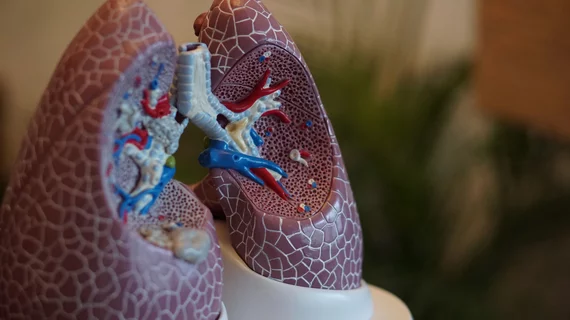Lung cancer deaths decrease, but only about 6% of high-risk patients screened using low-dose CT
Lung cancer deaths have decreased in the U.S. But there is still considerable room for progress, with less than 6% of high-risk patients screened for the disease, the American Lung Association reported Tuesday.
Five-year lung cancer survival rates have climbed 14.5%, up to nearly 24%. Yet, providers are still struggling to address disparities in minority communities, the ALA wrote in its fourth annual State of Lung Cancer report. People of color experience lower survival rates, worse outcomes and are less likely to receive surgical treatment than their white counterparts, the analysis found.
“The report highlights important news—more people are surviving lung cancer; however, it also underscores the fact that, sadly, health disparities persist for communities of color,” Lung Association President and CEO Harold Wimmer said in a statement. “Everyone deserves the opportunity to lead a full and healthy life, so more must be done to address these health disparities,” he added later.
One way to tackle this concern is screening with low-dose CT, which can reduce the death rate from the disease by 20%. Yet only about 5.7% of high-risk individuals are imaged for the disease, a number that’s as low as 1% in states such as California and Wyoming. Massachusetts, meanwhile, leads the way with a 17.8% rate among high-risk patients.
Payment reform is needed to address disparities, as Medicaid programs are one of the few payers not required to cover lung cancer screening. Currently, 40 Medicaid fee-for-service programs pay for LCS, while seven do not, and three more states did not have info available on their coverage policies, the report noted. Providers have diagnosed nearly 236,000 individuals with the disease this year. Kentucky had the highest rate of lung cancer at nearly 2.4 times higher than Utah, which had the lowest rate among states.
Radiologists and other providers diagnosed about 24% of cases at an early stage when about 60% of patients survive. About 46% of cases weren’t caught until later stages when survival rates fell to 6%. Massachusetts led the way at 30% while Hawaii fell last at 19%.
The American Lung Cancer Association compiled its report using 2014-2018 data from the North American Association of Central Cancer Registries. Researchers completed the analysis prior to the U.S. Preventive Services Task Force recently expanding eligibility for screening, which the ALA sees as “hope” for further progress in the future.

